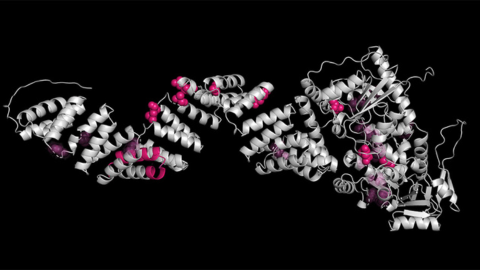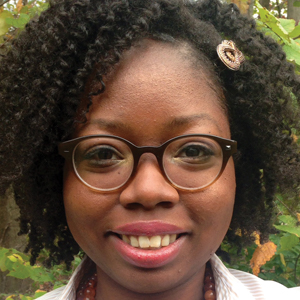Working at a national laboratory
For this week’s column, I talked to Faith Dukes, director of K–12 STEM programs at the Lawrence Berkeley National Laboratory, which is home of 14 Noble Prize winners and one of the 17 Department of Energy National Laboratories.
Growing up, Dukes was surrounded by a long line of Black women working in STEM careers. Her mother is a math teacher, one aunt majored in biology, one was a biology teacher, and another is a nurse. This, she said, made her realize that she could do STEM too.
“In terms of foundation, in terms of self-esteem around STEM, seeing this was very influential and important in my own development because it meant that science was something that people in my life did,” she said.
To continue this legacy of support of Black women, Dukes went to Spelman College. After graduating with a bachelor’s degree in chemistry, she went to graduate school at Tufts University. In addition to focusing on research, she was an instructor for Science from Scientists, gaining experience in teaching, curriculum development and outreach. In 2013, she earned her Ph.D. in physical chemistry.

Bringing science to the public
Dukes decided to continue on the path of education integrated with science and was hired as an education coordinator for the MIT Museum. While there, she oversaw more K–12 opportunities, organized science programs for students and interacted with the public.
In 2017, after working at the MIT Museum for four years, she decided she wanted to try something new. She applied for the AAAS Science & Technology Policy Fellowship and was accepted. She was placed at the National Science Foundation and worked on the Presidential Award for Excellence in Science and Mathematics and Teaching and the Presidential Award for Excellence in Science, Mathematics, Engineering and Mentoring programs.
As a fellow, she reviewed the best practices for STEM teaching at the K–12 level and looked at how students were mentored who pursued STEM majors and careers. She also met with the program award recipients to learn about their work and connected with people at the interagency level.
“Going through that whole process was eye-opening in terms of large logistics over short amount of time,” she said. “My mentor was really great and would say let’s go to this inner-agency meeting where all of the government agencies are talking about STEM education.”
Going to these meetings helped her learn the terminology and understand what was happening at the state, federal and community level. It helped her see the bigger picture. After being a fellow for almost two years, she was hired for her current role.
A day in the life working at a national laboratory
Currently, Dukes is the director of K–12 programs for the Lawrence Berkeley National Laboratory. The core of her work focuses on making programs an extension of the community and building strong relationships with the people within the surrounding community.
“We want to do more of connecting cultural aspects to scientific concepts so that students can really see it's not all just going to the lab … we want to show that STEM is not so far away from people,” she said.
Each of the lab’s programs is geared to give students access to STEM. There’s a monthly program called After School Science Hour for K–5 students and a Live Science Program (recently Microphone Mechanics and Georgia Tech collaborated to develop a program to showcase the cultural importance of boom-bap in hip-hop and how to make beats using code).
In addition, in the spring and summer, STEM camps and programs cater to both English and Spanish speaking students in their community. There’s a three-day camp for girls, an internship program, and a training program for using Python. As the options grow, the community demand for STEM programming keeps growing.
“One of the things that I have been able to do is have a niche. I'm working with middle and high school students, but I also would say I’ve been at prestigious research institutions. That has been very significant for me — to continue to try to always still be very much learning about what's happening right now in terms of research and emerging STEM fields,” she said.
Advice for working at a national laboratory
There are 17 Department of Energy National Laboratories to choose from and Dukes encourages scientists to apply for internships at them.
Here are Dukes’ tips:
- Study the laboratory: Every laboratory is different. Take time to check out each laboratory’s website and see what it has to offer. Read about the research and focus areas to see where your interests fit. “I say I'm a generalist because it's in all the fields. I probably unfortunately read about chemistry the least at this point in my life, but I’m looking for ways to change that. And while I was at MIT, it was mechanical engineering and computer science (focused). Data science, which includes scientific areas, has been a focus now,” she said.
- Practice your nontechnical skills: Scientists need to know more than science, so developing your nontechnical skills is essential. While earning her degrees, Dukes was a teaching assistant and participated in several outreach activities in her community. This helped her gain teaching, event planning, curriculum development and fundraising experience that still comes in handy.
- Learn to be a better science communicator: Over the years, science communication has been a top skill to learn no matter what field you are in. Working at Berkeley Lab means communicating with scientists, engineers, students and volunteers. Understanding your audience is key to ensure science accessibility. If you want to become a better communicator, share your science with your community, Dukes said. She emphasized: “Study and learn from professionals if you want to get into (science communication). It's the same way you would study a scientific field.”
- Learn about funding: Many scientists’ work involves applying for grants, fundraising or maintaining and analyzing a budget. Part of Dukes’ job is to review the program’s budget and secure philanthropic donations for the programs. If you are able to assist someone on a grant, do it, because it is an invaluable skill to have, she said.
- Volunteer: Be strategic in your volunteering. When Dukes started volunteering in college, she gained experience in logistical management, event planning and leadership. Her volunteering experiences prepared her for working at the MIT Museum. That experience helped her get the AAAS policy fellowship and then get hired for her role at Berkeley Lab. Now, she manages a team that works with more than 250 volunteers. You never know where you are volunteering will take you.
Enjoy reading ASBMB Today?
Become a member to receive the print edition four times a year and the digital edition monthly.
Learn moreFeatured jobs
from the ASBMB career center
Get the latest from ASBMB Today
Enter your email address, and we’ll send you a weekly email with recent articles, interviews and more.
Latest in Careers
Careers highlights or most popular articles

Upcoming opportunities
Friendly reminder: May 12 is the early registration and oral abstract deadline for ASBMB's meeting on O-GlcNAcylation in health and disease.

Sketching, scribbling and scicomm
Graduate student Ari Paiz describes how her love of science and art blend to make her an effective science communicator.

Embrace your neurodivergence and flourish in college
This guide offers practical advice on setting yourself up for success — learn how to leverage campus resources, work with professors and embrace your strengths.

Upcoming opportunities
Apply for the ASBMB Interactive Mentoring Activities for Grantsmanship Enhancement grant writing workshop by April 15.

Quieting the static: Building inclusive STEM classrooms
Christin Monroe, an assistant professor of chemistry at Landmark College, offers practical tips to help educators make their classrooms more accessible to neurodivergent scientists.

Unraveling oncogenesis: What makes cancer tick?
Learn about the ASBMB 2025 symposium on oncogenic hubs: chromatin regulatory and transcriptional complexes in cancer.

